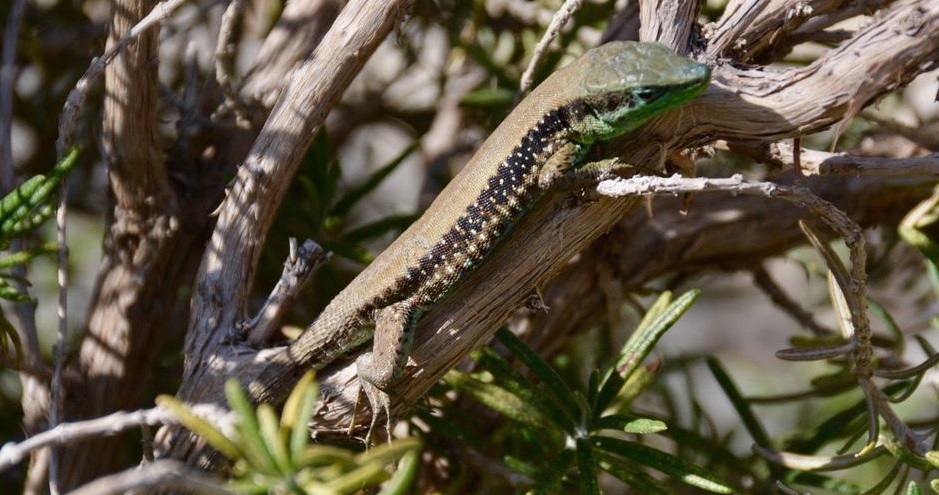There are some forty thousand subspecies scattered throughout the world. All of them are cold-blooded reptiles, whose body temperature depends on their environment.
 Photo: Antonio Cruz
Photo: Antonio Cruz
…the gecko, the monitor lizard, the lizard, the sand lizard, and the chameleon (Lev. 11 v 30)
In Israel more than 40 different kinds of lizard have been identified, belonging to different sub-species. [1] The Hebrew Word letaah, literally meaning “to hide”, is used to refer to lizards in general, on account of their elusive behaviour. In fact, other small reptiles like geckos, salamanders, skinks etc. could be included under the same category.
This term is translated into Greek as khalabotes and into the Latin of the Vulgate as stelio. In addition to this term another Hebrew word is also used to refer to these small reptiles. This term, jomet, means “one who clings to the ground”. In the Septuagint it is translated as saura and in the Vulgate as lacerta. Similarly, the latter, colloquial, term cannot easily be identified with any particular species of reptile, but the lizard can be included among them.
Broadly speaking, the lizard is the common name that is assigned to many small reptiles belonging either to the Lacertidae or the Gekkonidae families of which there are some forty thousand subspecies scattered throughout the world. All of them are cold-blooded reptiles, whose body temperature depends on their environment. In the levitical laws these animals were considered unclean, and anyone touching them was declared unclean until nightfall (Leviticus 11 v 30-31).
I photographed this particular specimen during my last visit to Israel while it was resting, half asleep, on a fragrant rosemary bush. For years now it has not been possible to set foot on the Mount of Olives, as it is protected by a strong iron fence to protect it from superstitious or somewhat fetishist tourists always on the lookout for twigs or branches from these emblematic trees. However, camera lenses can fit very comfortably between the railings.
The Lebanese lizard, a member of the Lacertidae family, is about 25 cm long, and is native to Cyprus, Turkey, Syria, Lebanon, Israel and Jordan. In Hebrew its name is Leta’a Zriza, which means “agile lizard”. Its back is brown in colour, while its sides are black but with whitish spots. Its head and underbelly are a greenish, almost turquoise colour.
Its tail is about twice as long as the rest of its body, and breaks off easily when it is attacked by a predator. The specimens which inhabit high land, like Mount Hermon, are smaller and more spotted. It climbs quickly and agilely over bushes, trees, rocks and walls to escape capture by predators. It feeds on a wide range of anthropoids, which it captures on the run. This species of lizard is in danger of extinction because of the destruction of its habitat, and has been included on the list of endangered species [2].
One can easily imagine that the ancestors of these lizards listened to the voice of Jesus, two thousand years ago, while he prayed to his Father in the garden, and were probably silent witnesses to his suffering. The Bible tells us that in Jesus, the Galilean Teacher, God became human, thus coming close to the whole of the cosmos that he had created. Even these animals were present at this scene, and have been testifying, right up until the present day, to this mysterious and unique event.
1] Bar, A & Haimovitch, G. 2011, A Field Guide to Reptiles and Amphibians of Israel, Pazbar, Herzliya, Israel.
[2] Crochet, P.-A. et al. Phoenicolacerta laevis, 2012, Lista Roja de la UICN de especies amenazadas. Consulted the 11 November 2012.

Las opiniones vertidas por nuestros colaboradores se realizan a nivel personal, pudiendo coincidir o no con la postura de la dirección de Protestante Digital.
Si quieres comentar o